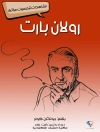Details Lawrence’s reception of Melville and reveals his underacknowledged role in the Melville Revival, while contributing to the history of the book and the study of the creative process.
How Lawrence Read Melville is a highly focused account of D. H. Lawrence’s discovery and reception of Herman Melville, from when he first read
Moby-Dick as a young man to his final references to Melville in his late works. It shows Lawrence’s initial reaction to
Moby-Dick; how it led him to other works by Melville, namely
Typee and
Omoo; and how Melville affected Lawrence’s critical and creative writing and shaped his philosophy.
This book is a study of the creative process that shows how one great writer inspired another, but it also makes a major contribution to the history of the book and two of its subfields: the history of reading, and reception studies. By his death in 1891, Melville had been forgotten except by a small circle of English enthusiasts. That group put Lawrence onto Melville, whereupon he became a – until now largely unacknowledged – leader of the Melville Revival that rescued the great writer from obscurity. This Swiss army knife of a book will appeal to scholars and booklovers alike.
表中的内容
Introduction
1: An English Midlands Bookshelf
2: An Archway into the Future
3: Everyman and the Dead Narrator
4: How
Moby-Dick Shaped
Women in Love
5: A Little Hesperides of the Soul and Body
6: The Symbolistic All-Knowledge
7: The Melville Centenary
8: Typee under Etna
9: Two Days in Tahiti
10: The Voyage Home
Index
关于作者
KEVIN J. HAYES is emeritus Professor of English at the University of Central Oklahoma. He is the author of many books including George Washington: A Life in Books (2017) for which he won the $50, 000 George Washington Prize, and At War with The Red Badge of Courage: A Critical and Cultural History (Camden House, 2020).












